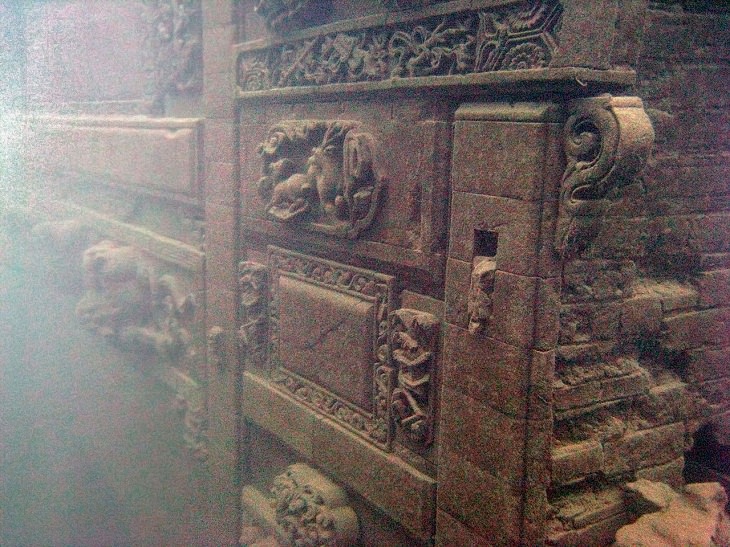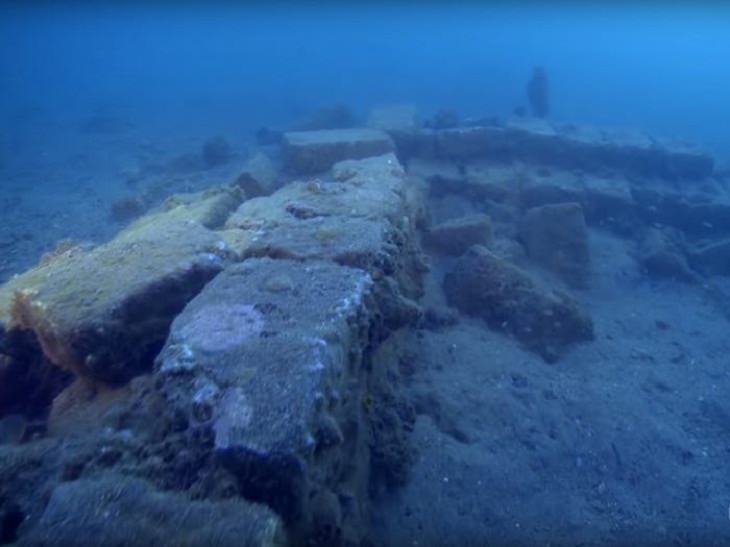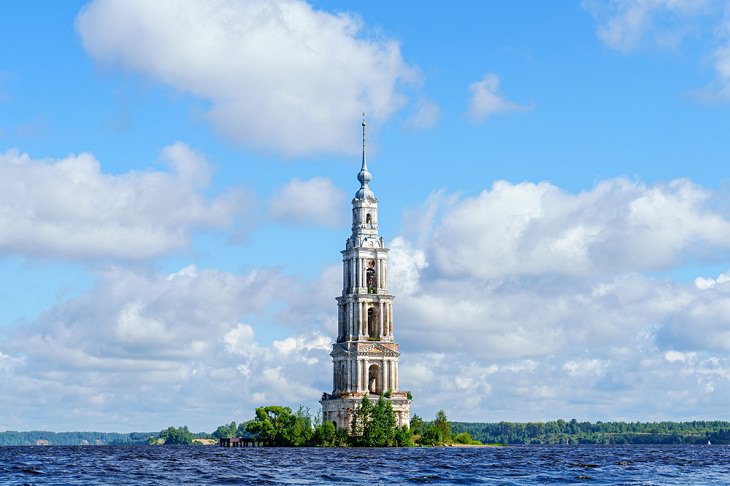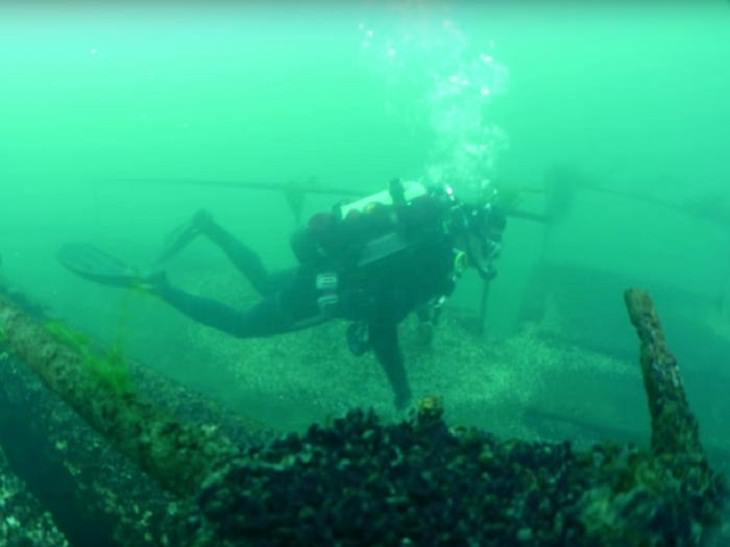Shi Cheng or “Lion City” is also known as China’s ‘Atlantis of the East’. Established about 1300 years ago, the city was deliberately flooded in 1959 for the creation of an artificial lake and hydroelectric power station. Almost 300,000 people were relocated before the city was flooded. Unfortunately, it was forgotten soon after. Until 2001, that is, when a government-led expedition found the ruins of the city deep in the waters of the artificial Qiandao Lake.
Surprisingly, the city hasn’t eroded much and one can find well-preserved examples of Ming and Qing Dynasty architecture in the ruins. The pagodas, temples, and elaborately carved dragons, lions, phoenixes, and other mythical creatures on several archways serve as an incredible time capsule of Imperial China. Local officials say that if the water level of the lake was lowered by about 30 meters (98 ft) today, we could clearly see the submerged city in all its glory which could be as breathtaking as Machu Picchu. Currently, there are no tourist facilities for diving there. But hopefully, the site will be open for everyone to view in the future.
2. Mediano – Spain
The Spanish town of Mediano was completely submerged in 1974 for the creation of one of the country’s largest reservoirs in the area. Curiously, the reservoir was opened without warning, and residents of the village had to hurriedly leave their homes when the flood started. Unfortunately, all the buildings and other structures in Mediano were completely immersed in the flood except one church. Today, the peak of that 16th-century church can be seen above the waters of the Mediano reservoir. Sometimes, when the water levels are really low, you can witness the whole stone tower in its former splendor.
3. Port Royal – Jamaica
Port Royal in Jamaica was once known as the 'Wickedest City on Earth’ as it was a haven for ruthless pirates. The city sank underwater after a massive earthquake hit Jamaica on the morning of June 7th, 1692. The tremors were so severe that the sandy peninsula on which the town was built was brutally rocked and caused Port Royal to slide beneath the sea. Historians estimate that almost 2,000 locals were killed immediately in the disaster.
In the 1980s, underwater archaeological investigations of the submerged portion of Port Royal have uncovered several remains of the 17th-century city, including some precious rarely-seen artifacts. Today, the sunken part of Port Royal, which includes many buildings in an almost intact state, is regarded as one of the best-preserved underwater cities in the world. In fact, the UNESCO World Heritage Conservation has described it as ‘an unrivaled collection of in situ artifacts’.
4. Simena – Turkey
The island of Kekova in Turkey is known for its breathtaking turquoise sea. But the place is also famous for the remains of a sunken ancient city that can still be seen below the waves. These remains belong to a trading post, Simena, that was destroyed by earthquakes during the 2nd century and slid into the sea. Even today, however, you can see parts of the city, such as brick walls and other structures, in the crystal clear waters of Gokkaya bay.
After it was rediscovered, the lost city became a popular snorkeling and diving spot but water exploration has been banned since 1986 to protect its heritage. However, you can still see the ancient city from above. The Turkish government declared the region a Specially Protected Area in 1990.
5. Kalyazin – Russia
Joseph Stalin, former premier of the Soviet Union, gave orders to flood the 12th-century town of Kalyazin, Russia, in 1939 for the construction of the Uglich Dam. As a result, a major part of the city was drowned and its population was moved to higher grounds. The city was once an important commercial center for Russia but after the Russian Revolution of 1917, it began to lose power. It was thus chosen as the site for the construction of the dam.
The waters drowned countless medieval buildings but the belfry of its cathedral still sticks out from above the water. Also known as the "Flooded Belfry”, the structure looks like a beautiful many-layered wedding cake and appears extra gorgeous when the water around it becomes frozen because of low temperatures. Since the location became quite popular, authorities built a small artificial island around the belfry. Amazingly, Orthodox Christian ceremonies are still held inside the tower occasionally.
6. The "Lost Villages" of Ontario – Canada
The “Lost Villages” include ten Canadian communities, all former municipalities of Cornwall and Osnabruck in Ontario, that were flooded in 1958 for the construction of a waterway. The communities of the Lost Villages were established in 1784 after the American War of Independence and were located on the north shore of the St. Lawrence River. The flooding of the communities resulted in the relocation of 6,500 people, along with old highways and railway lines, and a loss of prime farmland and mature orchards.
Even today, though, sidewalks and buildings of the communities are visible from some portions of the water. And if you are interested in learning more about the history of the Lost Villages, there’s a museum dedicated to them in Long Sault, Canada.
7. Pavlopetri– Greece
The undersea ruins of the city of Pavlopetri in Greece are believed to date back around 5,000 years. And it is for this reason that archeologists consider Pavlopetri to be the oldest known submerged city in the world. Discovered in 1967 by an oceanographer, the city might have been occupied from the third millennium until 1100 B.C and is located on the southern coast of Lakonia in Greece. Remarkably, archeologists found an almost complete city on the seabed, complete with streets, buildings, gardens, and tombs. The ruins of the Bronze Age port lie just steps away from a sandy beach, under the surface of the water in Lakonia’s Vatika Bay.
Share this interesting article with your friends and family...







